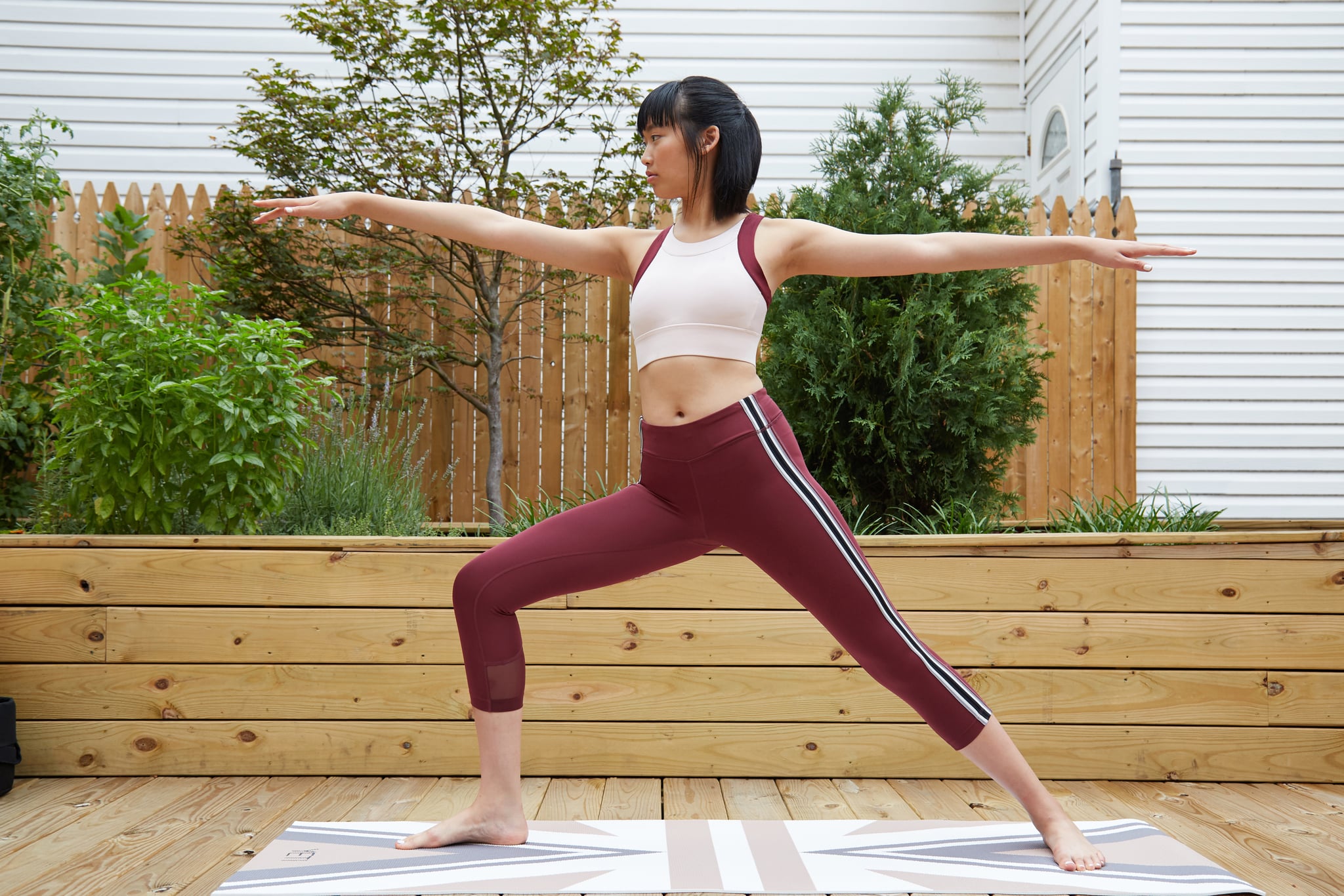
After many unfortunately stressful savasanas, I finally discovered I prefer flowing through a yoga sequence while dripping in sweat — my local hot yoga studio is what got me committed to a regular practice.
With social distancing in effect, attending a group class set to a little under 100 degrees isn’t a reality, and I haven’t been able to reap the benefits of the steamy stretch for quite some time.
Pumping up my own thermostat also isn’t possible (nor recommended!), so I reached out to two yoga instructors for advice on continuing my hot yoga practice at home. Check out a few of their thoughtful tips below.
First, Build Your Personal Practice
According to Valerie Verdier, a teaching director at Modo Yoga, the actual temperature ranges of hot yoga classes vary greatly, not to mention the actual heating system of a hot yoga studio is fairly complex.
Particularly high temperatures and exercise isn’t something to mess around with, so it’s better to play it safe. Therefore, instead of investing in some kind of portable heater, Verdier says to wait until your studio opens back up to experience the heat — in the meantime, focus on building your practice or working through Hatha sequences.
If you’re new to yoga in general, Adrianne Du’Sauzay, a CorePower Yoga leader, agrees that practicing at home before heading into a studio can be very beneficial.
“At home, you’ll be in a familiar surrounding and can be guided through your practice with clear cues, encouragement, and customization tips from teachers,” Du’Sauzay explains.
“With consistent practice at home, you’ll be able to familiarize yourself with pose names, shapes, and get used to being in touch with your breath. Once you’re able to practice in the studio, you will be able to follow the teacher’s cues more easily and try them on fully as you practice on your private island, your mat, in the studio — one breath to movement at a time.”
Modo Yoga and CorePower Yoga both offer on-demand classes and live sessions.
Consider Closing the Doors and Windows
If you want to experiment with a slightly warmer environment, Du’Sauzay recommends closing your windows.
“If possible, practice in a smaller room, and close the door as well. Your body heat will fill up the room, especially if you linger in twisting postures (like Prayer Twist) or compression postures (like Eagle pose) a little longer. These poses will help you trap heat as you contract one side of your body to expand on the other side,” Du’Sauzay says.
Du-Sauzay also mentions you might also consider turning off the AC or any fans. Another tip? You can wear extra layers of clothes to stay warm and remove them to release the heat as you go.
Again, safety measures should always be taken, so chat with your doctor before beginning a new exercise regimen.
Concentrate on Your Breath
Du’Sauzay suggests adding “ujjayi breath” to your practice to build heat in your body while also maintaining the focus in the mind.
“For ujjayi breath, seal your lips, bring a slight contraction to the back of your throat, and evenly inhale and exhale out of your nose. Enjoy the texture and quality of your focused, heated breath, and notice your body will heat up from the inside out!”
Stay Hydrated
This is an essential tip when it comes to practicing hot yoga. “Proper hydration before and after class is the key,” Verdier says. “The first thing people mention after taking a hot yoga class is how much they sweat.”
So, Verdier recommends hydrating with plenty of water and also electrolytes.
Modify Your Practice With Props as Needed
“The beautiful thing about yoga is that you don’t need much beyond your body, breath, and focus in the moment to turn your space into your own private studio!” Du’Sauzay says.
However, adding props to your practice could help you modify moves and feel your best in each pose. It’s also nice to have them nearby, so you don’t have to worry about leaving your mat in the moment.
For example, Du’Sauzay mentions that straps or towels can help you reach your feet in poses like Standing Head to Knee.
“To bring the ground closer to you in standing poses like Standing Splits, use a block or your water bottle for balance. Use a pillow or block to ‘lift’ the ground to your hips for poses like Half Pigeon (if your hips hover off of your mat); and for resting poses on the floor, like Final Resting pose, Savasana, have a blanket nearby for continued warmth as you release ujjayi breath and return to your natural, easeful breath,” Du’Sauzay continues.
Take Your Practice Outside
If you’re craving that sunny warmth, Verdier says you can always take your yoga practice outside — but be sure to hydrate properly beforehand and protect yourself with SPF!
Click here for more health and wellness stories, tips, and news.
Image Source: POPSUGAR Photography / Diggy Lloyd
